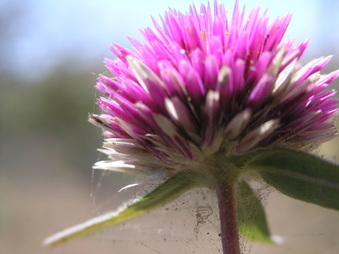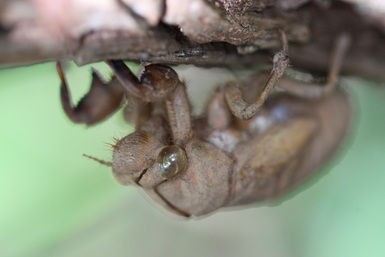Plants & animals
Flora
The flora of the area represents a rich and diverse natural resource and is fairly typical for the Northeast Arnhem Land region. Available species have a range of potential uses. Some species are the source of food, some of medicines, and some of material for the manufacture of tools.
A number of species also function as 'bio-indicators', i.e. flowering signals the availability of desirable seasonal resources such as Djinydjalma (Mud Crabs) or Guku (sugarbag, wild honey).
Plants also play an important role in ceremonial and ritual aspects of Yolngu life. Plant names and uses were bestowed by ancestral creation figures.
The flora of the area represents a rich and diverse natural resource and is fairly typical for the Northeast Arnhem Land region. Available species have a range of potential uses. Some species are the source of food, some of medicines, and some of material for the manufacture of tools.
A number of species also function as 'bio-indicators', i.e. flowering signals the availability of desirable seasonal resources such as Djinydjalma (Mud Crabs) or Guku (sugarbag, wild honey).
Plants also play an important role in ceremonial and ritual aspects of Yolngu life. Plant names and uses were bestowed by ancestral creation figures.
_Fauna
Compared with the recent loss of wildlife in most areas in Australia, the wildlife of northeastern Arnhem Land generally is notable for its apparent intactness.
Most of northeastern Arnhem Land has been little modified by European influence." Totals of 13 frog, 76 reptile, 207 bird and 35 mammal species (including 8 feral) have been recorded in the Manydjarrarrnga-Wanuwuy area, or nearby mainland locations.
The variety of species, and the population densities of individual species, appears very similar to other sites on the Northern Territory coastline which have been surveyed.
It has been noted that: "No vertebrate species is restricted to the wider northeastern Arnhem Land region (with the possible exception of Glaphyromorphus (crassicaudis arnhemincus), although for several species (e.g. the Northern Hopping Mouse Notomys aquilo, the skink Lerista stylis) the region is a major stronghold.
"The coastal area of north-eastern Arnhem Land, including Manydjarrarrnga-Wanuwuy, provides feeding habitat and nesting sites for several threatened species of marine turtles:
Nesting densities for these species are relatively low in comparison with other nearby beaches, particularly to the south. However, the fact that all three species mentioned above, plus the Flatback turtle (Natator depressus), use the same beaches for nesting at Wanuwuy represents an uncommon situation. Individual beaches are generally used for nesting predominantly by one species, and the multi-species nesting activity recorded on the beaches at Wanuwuy is unusual
Gambold et al. (1995:29-35) list a range of fauna that have been recorded at Wanuwuy, or nearby mainland areas, and which they regard as 'species of conservation concern': 4 species of birds, 9 species of reptiles and 3 mammal species. In addition, they note that 38 species of migratory birds included in international treaties ratified by the Commonwealth Government have been recorded in the northeastern Arnhem Land region, including 19 species which have actually been recorded from Wanuwuy despite the very restricted survey efforts in previous years.
Compared with the recent loss of wildlife in most areas in Australia, the wildlife of northeastern Arnhem Land generally is notable for its apparent intactness.
Most of northeastern Arnhem Land has been little modified by European influence." Totals of 13 frog, 76 reptile, 207 bird and 35 mammal species (including 8 feral) have been recorded in the Manydjarrarrnga-Wanuwuy area, or nearby mainland locations.
The variety of species, and the population densities of individual species, appears very similar to other sites on the Northern Territory coastline which have been surveyed.
It has been noted that: "No vertebrate species is restricted to the wider northeastern Arnhem Land region (with the possible exception of Glaphyromorphus (crassicaudis arnhemincus), although for several species (e.g. the Northern Hopping Mouse Notomys aquilo, the skink Lerista stylis) the region is a major stronghold.
"The coastal area of north-eastern Arnhem Land, including Manydjarrarrnga-Wanuwuy, provides feeding habitat and nesting sites for several threatened species of marine turtles:
- the Hawksbill turtle (Eretmochelys imbricata)
- Green turtle (Chelonia mydas)
- and Olive Ridley turtle (Lepidochelys olivacea).
Nesting densities for these species are relatively low in comparison with other nearby beaches, particularly to the south. However, the fact that all three species mentioned above, plus the Flatback turtle (Natator depressus), use the same beaches for nesting at Wanuwuy represents an uncommon situation. Individual beaches are generally used for nesting predominantly by one species, and the multi-species nesting activity recorded on the beaches at Wanuwuy is unusual
Gambold et al. (1995:29-35) list a range of fauna that have been recorded at Wanuwuy, or nearby mainland areas, and which they regard as 'species of conservation concern': 4 species of birds, 9 species of reptiles and 3 mammal species. In addition, they note that 38 species of migratory birds included in international treaties ratified by the Commonwealth Government have been recorded in the northeastern Arnhem Land region, including 19 species which have actually been recorded from Wanuwuy despite the very restricted survey efforts in previous years.




